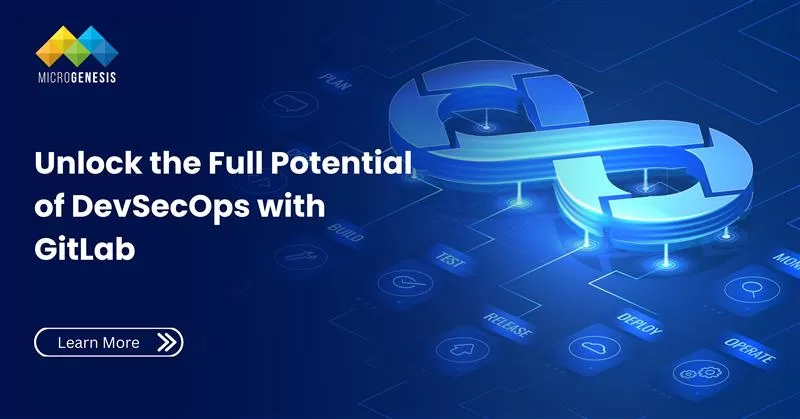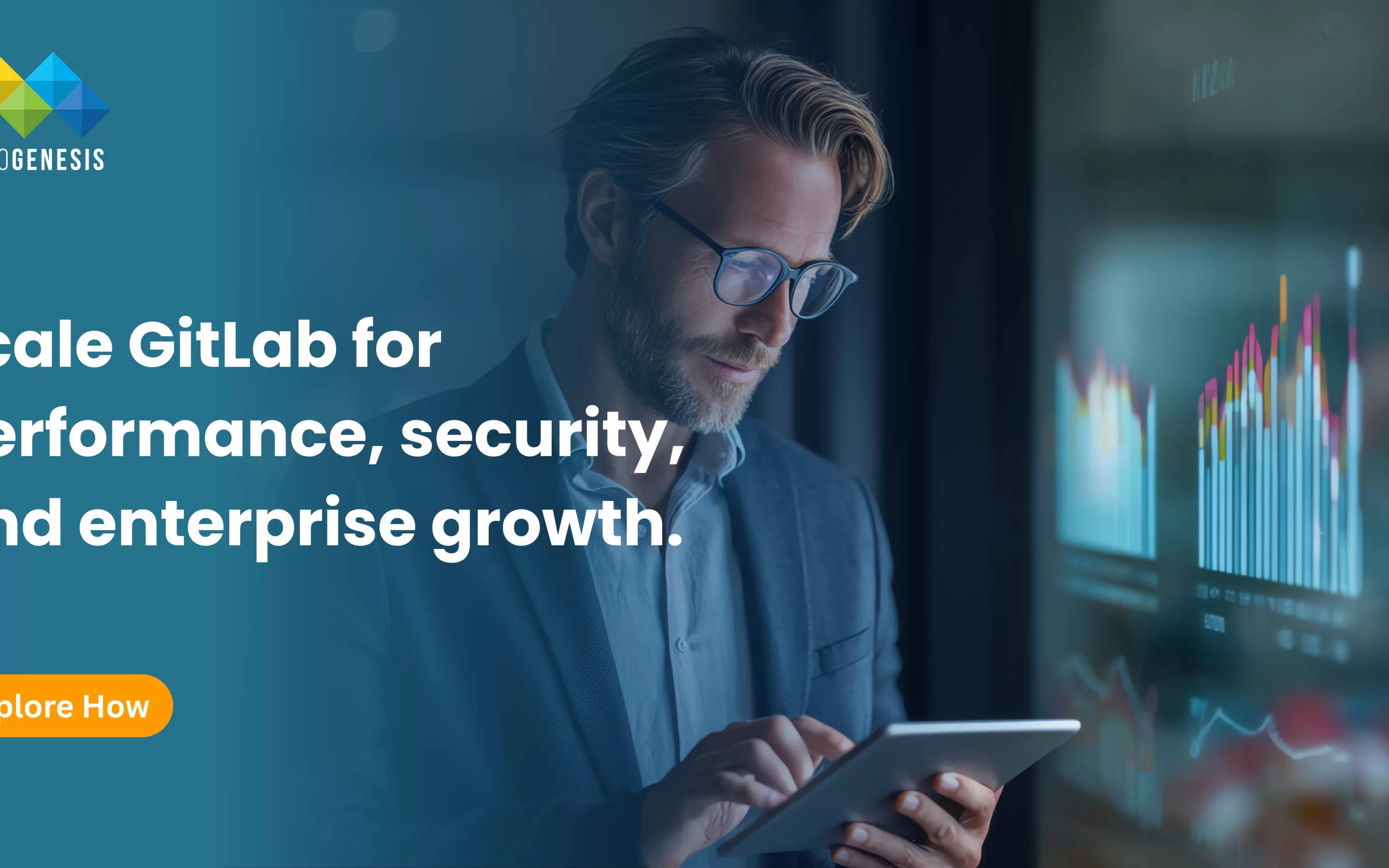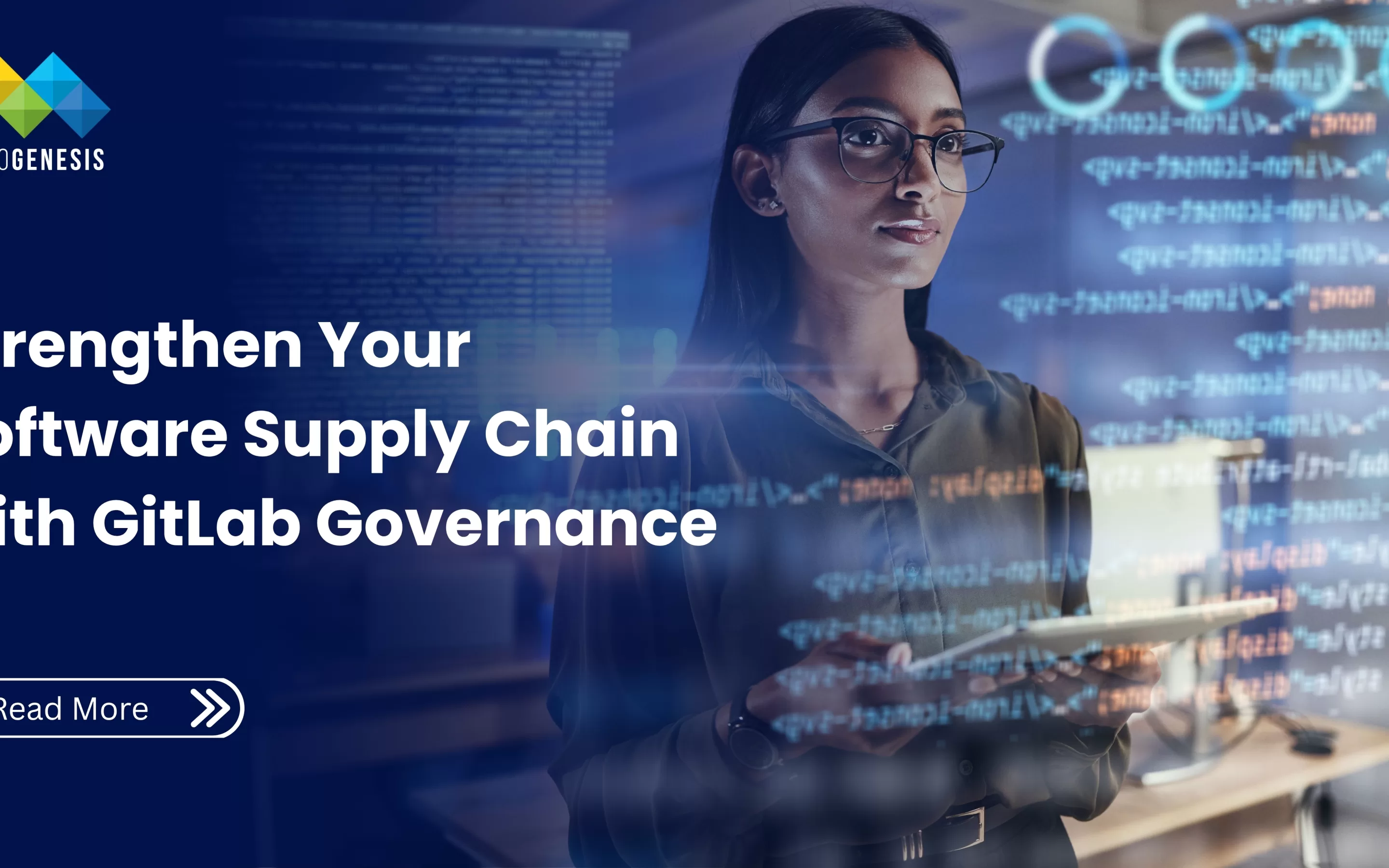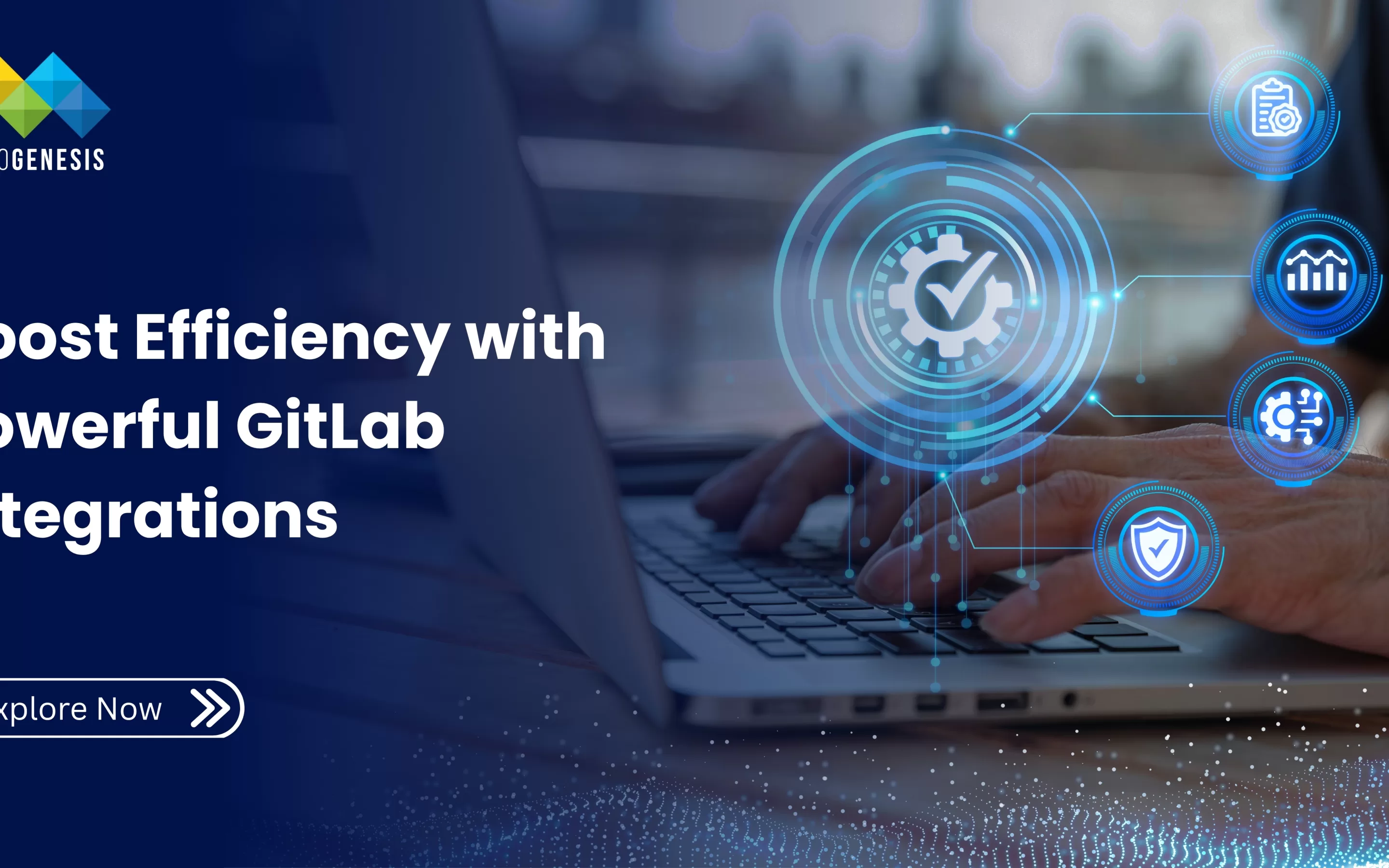In the modern era of digital transformation, software isn’t just supporting the business — it is the business. From financial systems to customer portals, every enterprise now relies on software to drive value. Yet, the challenge remains: how can organizations deliver software faster, more securely, and more efficiently while maintaining compliance and quality?
The answer lies in DevSecOps — an evolved form of DevOps that integrates security across the entire software lifecycle. And at the forefront of this revolution is GitLab, the unified DevSecOps platform designed to bring together development, security, and operations under one collaborative environment.
This comprehensive guide explores how GitLab enables enterprises to maximize DevSecOps value, streamline collaboration, automate processes, and embed security without compromising agility.
1. The Evolution of DevSecOps
1.1 From DevOps to DevSecOps
DevOps transformed how teams build and deploy software by promoting collaboration between developers and operations teams. However, as applications grew more complex and cyber threats intensified, security often lagged behind.
This led to the emergence of DevSecOps, where security becomes a shared responsibility integrated throughout the pipeline. Instead of security being a “final gate,” it’s embedded from the very first line of code to production deployment.
GitLab was among the first platforms to realize that DevSecOps success depends on consolidation — uniting code, CI/CD, and security into one cohesive ecosystem.
1.2 The Problem with Tool Fragmentation
Traditionally, organizations relied on multiple tools: GitHub for version control, Jenkins for CI/CD, SonarQube for code quality, Jira for tracking, and separate tools for security scans.
This patchwork created silos, integration issues, and limited visibility.
GitLab addresses this challenge by combining these functions into a single application, drastically simplifying toolchains, improving productivity, and reducing operational overhead.
2. GitLab as a Unified DevSecOps Platform
2.1 A Single Source of Truth
GitLab’s unified architecture ensures that developers, security teams, and operations work from the same platform and dataset. Every commit, merge request, pipeline, and deployment is traceable and auditable — providing end-to-end visibility.
With leading DevOps service providers like MicroGenesis, organizations can fully leverage GitLab’s integrated capabilities to enhance collaboration, improve traceability, and drive secure, efficient software delivery across the entire lifecycle.
This “single source of truth” not only improves collaboration but also strengthens accountability and governance. Teams no longer need to reconcile multiple systems or duplicate data.
2.2 Built-In Security and Compliance
GitLab integrates multiple layers of security directly into the CI/CD pipeline:
- Static Application Security Testing (SAST) for early detection of code vulnerabilities
- Dynamic Application Security Testing (DAST) for runtime testing
- Dependency Scanning to uncover vulnerable libraries
- Container Scanning for insecure base images
- License Compliance to track open-source risks
For regulated industries like finance or healthcare, GitLab’s compliance dashboard offers audit trails, policy management, and role-based access control (RBAC), making governance part of everyday workflows.
2.3 Continuous Integration & Delivery (CI/CD)
GitLab CI/CD enables automation from build to deployment. Using simple YAML files, enterprises can define multi-stage pipelines that run unit tests, scans, and deployments seamlessly.
This reduces manual intervention, shortens release cycles, and ensures consistent quality. Whether deploying microservices on Kubernetes or applications across hybrid clouds, GitLab CI/CD scales effortlessly.
3. Benefits of GitLab for Enterprises
3.1 End-to-End Visibility
GitLab’s integrated environment eliminates “black boxes.” Every stage of development — from idea to production — is visible in a unified dashboard. This transparency helps teams detect bottlenecks, track KPIs, and improve efficiency.
3.2 Accelerated Software Delivery
With automated pipelines, GitLab allows faster iteration, testing, and deployment. Teams can shift from quarterly releases to daily or even hourly deployments, achieving agility without losing stability.
3.3 Enhanced Security Posture
Embedding security scans and compliance checks in the pipeline ensures vulnerabilities are identified before release, not after.
GitLab’s security gates can block unsafe code merges automatically, reducing risks and compliance violations.
3.4 Cost and Operational Efficiency
By consolidating tools, GitLab reduces licensing and maintenance costs. A single platform simplifies updates, training, and governance — leading to lower total cost of ownership (TCO).
3.5 Cross-Functional Collaboration
GitLab empowers developers, testers, and security analysts to work in parallel within the same ecosystem. Shared dashboards, issue tracking, and approvals encourage teamwork and reduce communication gaps.
4. Core GitLab Capabilities That Drive DevSecOps Success
4.1 Source Code Management (SCM)
GitLab’s robust version control system supports branching, merging, and review workflows. Integration with CI/CD ensures that each commit triggers automated tests and scans, keeping code quality high.
4.2 Continuous Integration (CI)
Every change is automatically built and tested, ensuring early detection of bugs. Teams receive feedback within minutes, speeding up iteration and reducing integration issues.
4.3 Continuous Deployment (CD)
GitLab enables automated deployments with rollback capabilities. Enterprises can deploy multiple times daily across multiple environments — development, staging, and production — without manual intervention.
4.4 Security Automation
Integrated scanning tools (SAST, DAST, Container Scanning, Secret Detection) make it easy to secure applications proactively. Reports are visible within merge requests, allowing developers to remediate issues instantly.
4.5 Observability & Analytics
GitLab integrates with Prometheus and Grafana for real-time monitoring. Teams can track resource usage, build times, and release performance, turning data into actionable insights.
5. Enterprise Use Cases of GitLab
Use Case 1: Financial Services – Compliance and Risk Management
A global bank adopted GitLab to unify its fragmented toolchain. By embedding security and compliance into pipelines, they reduced audit preparation time by 40% and achieved faster regulatory reporting.
Use Case 2: Healthcare – Secure Data and HIPAA Compliance
A healthcare company using GitLab automated data validation and security scanning across its patient data systems, improving compliance and reducing vulnerabilities by 30%.
Use Case 3: Manufacturing – CI/CD for Embedded Software
A manufacturing firm used GitLab to manage firmware updates for IoT devices. The integrated platform reduced release time from weeks to days while ensuring consistent quality.
Use Case 4: SaaS Companies – Continuous Delivery
SaaS providers use GitLab to continuously push updates to production with minimal downtime, ensuring customers always have access to the latest features.
6. The Role of GitLab Partners in Maximizing Value
Enterprises can realize GitLab’s full potential faster by engaging with certified GitLab Consulting Partners. These partners provide end-to-end services including:
- Assessment & Advisory: Evaluate current processes and design GitLab adoption roadmaps.
- Implementation & Integration: Seamlessly deploy GitLab with existing DevOps ecosystems.
- Security & Compliance Setup: Configure pipelines with built-in governance.
- Training & Enablement: Empower internal teams with best practices and hands-on expertise.
- Managed Services: Offer continuous monitoring, updates, and performance optimization.
By leveraging partner expertise, organizations accelerate digital transformation and ensure sustainable DevSecOps maturity.
7. Overcoming Common Challenges
7.1 Change Management
Adopting a unified platform often encounters internal resistance. Effective communication, leadership advocacy, and pilot projects showcasing quick wins help ease this transition.
7.2 Complex Pipelines
Building and maintaining pipelines can be daunting. GitLab provides reusable templates, YAML libraries, and community examples to simplify setup and standardize workflows.
7.3 Skill Gaps
Not all teams have immediate expertise in DevSecOps automation. Continuous training, certifications, DevOps consulting, and mentorship programs help close this gap — empowering teams to build long-term capability and self-sufficiency.
7.4 Balancing Speed and Security
Some teams fear that adding security checks may slow down delivery. GitLab’s integrated model ensures that security is automated, fast, and invisible to users — achieving both agility and protection.
Learn More: Optimizing CI/CD Pipelines in GitLab: Strategies for Speed and Reliability
8. Measuring DevSecOps Success in GitLab
To quantify DevSecOps maturity and ROI, organizations should track:
| Metric | Description |
| Deployment Frequency | Number of production deployments per day/week. |
| Lead Time for Changes | Time from commit to deployment. |
| Mean Time to Recovery (MTTR) | Time to recover from failure. |
| Change Failure Rate | Percentage of deployments causing incidents. |
| Vulnerability Remediation Time | Average time to resolve detected issues. |
Tracking these metrics helps identify process bottlenecks and measure the business impact of GitLab adoption.
9. The Future of DevSecOps with GitLab
9.1 AI-Driven Development
GitLab’s Duo AI offers intelligent code suggestions, automated documentation, and natural language queries for faster, smarter development cycles.
9.2 Policy-as-Code and Compliance Automation
Future releases emphasize codified governance — allowing enterprises to enforce security and compliance dynamically, across thousands of projects.
9.3 Observability and Predictive Analytics
GitLab will integrate deeper with analytics engines to predict potential failures and optimize resource utilization automatically.
9.4 Sustainable DevOps Practices
As sustainability becomes a business priority, GitLab helps organizations track and minimize energy consumption through optimized pipelines and cloud efficiency.
10. Conclusion
As organizations navigate digital transformation, speed and security must coexist. GitLab delivers the ultimate platform for achieving that balance. Its unified DevSecOps environment eliminates the friction of fragmented tools, embeds security by default, and fosters collaboration at scale.
Partnering with MicroGenesis, one of the best IT companies and a trusted GitLab expert, enables enterprises to accelerate adoption, enhance compliance, and achieve continuous innovation — securely and efficiently.
GitLab, with MicroGenesis as your strategic partner, isn’t just a DevOps platform; it’s a catalyst for fearless innovation and continuous value delivery in a secure, transparent, and collaborative ecosystem.automated way.




